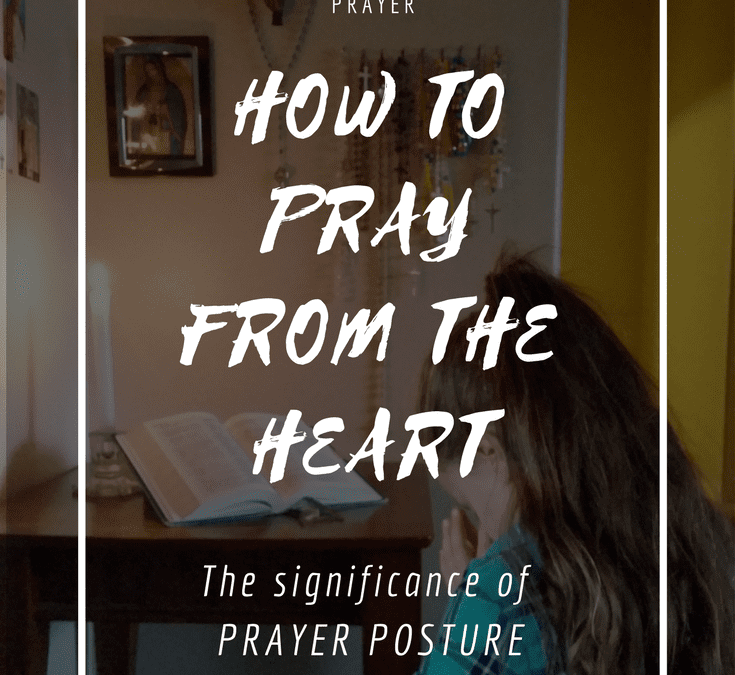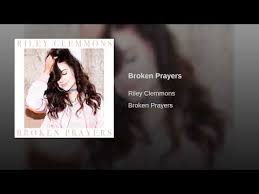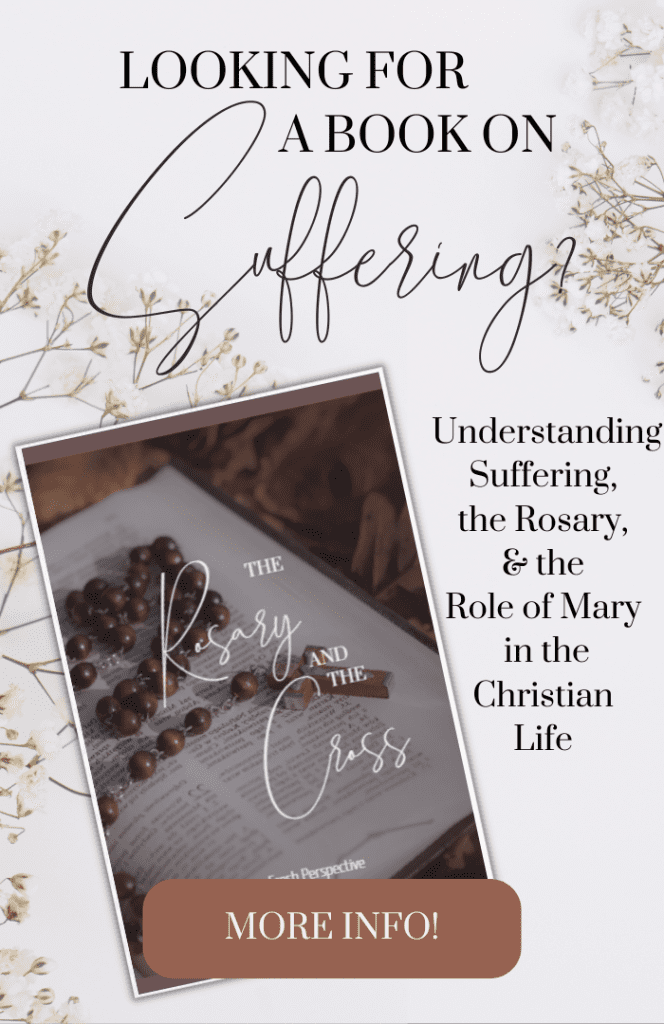…God called to him from the midst of the bush and said, “Moses, Moses!” And he said, “Here I am.” Then God said, “Do not come near here; remove your sandals from your feet, for the place on which you are standing is holy ground. […] I am the God of your father, the God of Abraham, the God of Isaac, and the God of Jacob.” Then Moses hid his face, for he was afraid to look at God.” (Exodus 3:4-6)
If you have ever taken freshman level college classes you probably learned in Comm 101 that over 90% of communication is non-verbal. This means that facial expression, hand gestures, tone of voice and bodily postures make up the vast majority of all communication and comparatively little relies on the actual words used.
This does not mean that word choice is unimportant, but it does suggest that there should be a post dedicated not just to what to say to God but how we say it.
There are many people who claim that prayer postures do not matter because prayer is purely spiritual and merely a matter of the heart. This can be true to an extent – such that it is not NECESSARY to adopt certain specific prayer postures in order to pray well – but these exceptions to the “rule” should be based on more extenuating circumstances rather than becoming the norm. See “daily life” below, for example.
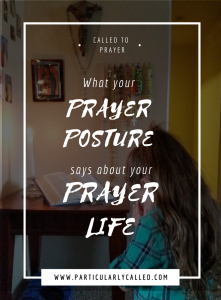
In general (no matter which position):
For eyes:
- Looking up is for thanks, glory, and offering
- Looking down or away is for submission and humility
But the tax collector stood at a distance, unwilling even to lift up his eyes to heaven. Instead, he beat his breast and said, ‘God, have mercy on me, a sinner!’ – Luke 18:13
- Eyes closed can also be a sign of submission or humility but most often it is used just to help eliminate distractions. (This is more of a personal preference.)
For Hands:
- Palms up and open – for thanks, glory, and offering – By praying this way, the worshiper acknowledges God as external and transcendent and that we are beholden to Him for all that we have.
And all the people answered, “Amen, Amen!” while lifting up their hands. – Nehemiah 6-8
- Hands folded – submission, sign of voluntary slavery (aka hands tied together) also a sign of surrender (aka, not able to pick up a weapon) – see origin
- Hands joined with others – strength in numbers, unity – This position is not necessary to pray in unity with others, if every one is doing the same posture we are still united – this is based on personal taste – if it is more meaningful for you to hold hands with another person, do so, if it is distracting, don’t. Where two or three are gathered in my name, there am I in their midst – (Matthew 18:20)
- Hands outstretched (fingers pointed upward (degree is irrelevant), but palm facing toward person/item being blessed) – blessing, healing – calling out to God to extend His blessing upon those upon whom we have laid or outstretched our hands
- Hands balled into fists/arms crossed/on hips/ or palms down (except when prostrate) – suggests anger, frustration or being closed off to what God has to offer. Not a recommended prayer position – (see exception below)
[mailerlite_form form_id=5]
Prayer “Props”
Holding or looking at things like crosses or images while praying can help us to pray by increasing the number of senses involved in our prayer. You can think of it like looking at a picture of your loved one as you talk to them on the phone. Be sure to choose images and objects that are meaningful to you so that you find your prayer enhanced by them and they do not become a distraction. In general, any object that causes you to focus more on it than on what it means/signifies (ie. excessively cold/hot, damaged, old/new, comfortable/uncomfortable, “ugly”, etc) is not helping you to pray.
[tweetshare tweet=”Any object that causes you to focus more on it than on what it signifies is not helping you to pray.” username=”CarolynMPereira”]
Prayer positions
Each prayer position has positives and negatives associated with it. It is important to weigh your motives for choosing a particular prayer posture before beginning to pray so that you can get the most out of your prayer time.
Sitting
She had a sister called Mary, who sat at the Lord’s feet listening to what he said. (Luke 10:39)
Significance:
Listening in attentiveness – ie. like a child in a schoolroom *Fun fact – this is exactly why pews were invented in the first place, to endure long sermons!
Positives:
The disciples often sat with Our Lord as He taught them. So also did the crowds who came to listen to Him:
“Tell them to sit down” – Luke 9:14
Sitting expresses a familiarity with Christ, a closeness, a heartfelt desire to absorb everything that He might want to tell you.
This is usually the position you would assume for reading a religious book or listening to a sermon because it is the position that suggests listening, a willingness to learn, and undivided attention.
Sitting is also a very practical posture to assume while writing (Read also: Post on Prayer Journaling), or if distractions are too numerous in other positions (such as pain from an injury or being worried about what people think).
Negatives:
Most often sitting is seen as a sign of leisure, relaxation, informality, and comfort. It can sometimes be seen as the “weakest” prayer position compared to the others and was not thought to have become standard practice except for the aged and infirm until the invention of pews…
Conclusion:
Praying while seated is a very valuable and valid form of prayer when combined with correct disposition of the heart (commonly shown in in eye and hand postures, see above).
Assess your true motives for praying while seated. If it is out of laziness then maybe you should reassess your commitment to prayer. But, if it is genuinely meaningful to you, or necessary in your circumstances (ie. in a car) then go for it. The important thing is to PRAY ON PURPOSE!
Standing
Significance:
Respect in the presence of authority and power – also, at the ready to receive and follow orders.
Example: The healing of the Centurion’s servant.
Nowhere in either Matthew or Luke does it specify the position in which the Centurion approached Jesus; but, I would be completely shocked if he did anything other than remain standing.
The gospel writers write constantly of people throwing themselves at Jesus feet, sitting with Him, climbing trees to see Him, etc, and yet the Centurian’s position was left unspecified. Centurions were high ranking Roman authorities and any sign of bodily humility or subjugation, especially to a poor man from Nazareth, would definitely have been noteworthy enough to be included in the story.
Also, clearly, the Centurion saw Jesus as a figure with authority (even if it was only the spiritual/miraculous kind). Thus, naturally, a military trained soldier would stand as a sign of this respect.
Lastly, since the idea of authority and diligently giving and receiving orders is such a part of this passage, it makes sense that Christ would close the conversation with, “’Go, your servant has been healed’ – and the man went” (Matthew 8:13).
He was at the ready. He probably clapped his arm to his breastplate in salute and turned to go as quickly and stately as he had come.
(This theory could potentially be undermined if the Centurian remained on his horse during the whole exchange, but the heart of the matter remains, the respect remains, the attitude of “being at the ready” remains. Even if the man remained on his horse out of feeling hurried on his quest, in his heart, he was “Standing”)
Potential Negatives:
Standing can be prideful, ie. a symbolic “refusal to bow”.
And when you pray, do not be like the hypocrites. For they love to pray standing in the synagogues and on the street corners to be seen by men. Truly I tell you, they already have their reward. Matthew 6:5
The Pharisee stood by himself and prayed, ‘God, I thank You that I am not like the other men–swindlers, evildoers, adulterers–or even like this tax collector. Luke 18:11
Conclusion:
Again, always assess your purpose for praying in a particular poise in your heart. If you are doing anything ever from a desire to be seen or acclaimed than your prayer is not prayer, but rather a demonstration of pride and vanity.
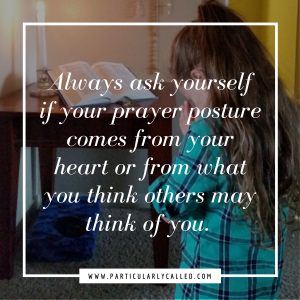
Kneeling
At the name of Jesus every knee shall bow, in heaven and on earth and under the earth. – Philippians 2:10
Significance:
Humility, submission, repentance, supplication – not the oldest form of prayer but a good second to prostration if prostration isn’t an option.
Potential Negatives:
Kneeling is a clear sign of prayer and there are not many who do not know its meaning. Thus, some may kneel to put on a show. Some may want others to see them pray. But, once again, if you are ever doing anything “for show” then, by definition, it is not real!
[tweetshareinline tweet=”if you are ever doing anything “for show” then it is not for real!” username=”CarolynMPereira”]
If you don’t kneel out of the true disposition of your heart than bowing your knee is a lie!
Conclusion:
Always ask yourself if your prayer position comes from your heart or from what you think others may think of you.
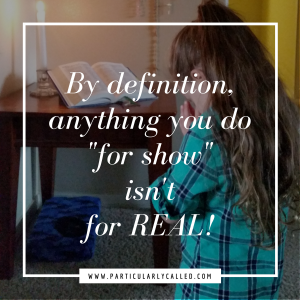
Prostration
Significance:
Complete abnegation of self to God. Total worship, repentance, humility, desperation, or supplication. (See also, The biblical origin and value of prostration)
After coming into the house they saw the Child with Mary His mother; and they fell to the ground and worshiped Him. Then, opening their treasures, they presented to Him gifts of gold, frankincense, and myrrh. – Matthew 2:11
While He was in one of the cities, behold, there was a man covered with leprosy; and when he saw Jesus, he fell on his face and implored Him, saying, “Lord, if You are willing, You can make me clean.” – Luke 5:12
And He went a little beyond them, and fell on His face and prayed, saying, “My Father, if it is possible, let this cup pass from Me; yet not as I will, but as You will.” – Matthew 26:39
Potential “Risks”:
This position is scary and not much approached. You run the risk of being stepped on or made fun of so it is rare for someone to do it “for show”. (However, I suppose it is possible.) There is also the risk that this position feels so strange and new to the person attempting to pray that they find themselves terribly distracted.
Conclusion:
This position is incredibly powerful if you are ever brave enough one day to try it. Highly recommended. However, if/when you choose to try it, do so, at least at first, in private.
Dancing
David danced before the Lord as the Ark of the Covenant was brought into Jerusalem – 2 Samuel 6:14
Significance:
Overflowing and outpouring joy, excitement, and gratitude
Positives:
Yes, excitement can be, and, in fact, is a prayer! Our bodies are given to us by God and are themselves temples. They are holy. Therefore, what we do with them speaks, both to God himself (as a “happy dance” would speak to the person who delivered good news) but also to those around you who see it as a testament to your relationship with God. (Clean) dance is a beautiful way to convey the overflowing joy that God puts into our hearts when we are in strong relationship with Him as a sign of His love for us.
This expression of prayer with our bodies is also why the marital embrace has often been compared to prayer. (God is amazing!)
Potential negatives:
Please don’t use this as a justification for every kind of dance. Inappropriate dances do not proclaim God’s love, His closeness to us or the joy He brings to us, but rather, they mimic it and distort it. They may try to grasp at the joy of holy dance but never even come close. They are imposters – just like sex for the sake of self-gratification is to the true marital union. (Read more about the distortion of good to tempt us to evil in my post on Spiritual Warfare)
Fist shaking, pleading, screaming, crying
These are all valid forms of prayer – GOOD prayer. REAL prayer. Do not hide your heart from God. This is where He wants to abide. Welcome Him in. Pour yourself out. He wants your messes, your real, your everything. (Read also: Combatting Perfectionism – How to Invite God into your mess)
Crushed in soul, Hannah prayed to God and cried and cried—inconsolably. – 1 Samuel 1:10.
Risks:
I cannot think of any risks in this kind of prayer. It is hard for me to imagine that this kind of prayer would be possible in public, especially if it wasn’t genuine. If you do manage to do this disingenuously you should pat yourself on the back for being an amazing actor, but really all you are is a liar and a whitewashed tomb (Sorry, it’s the truth).
Truly, the biggest risk here is the best kind possible. The biggest risk is that it bares your soul and exposes the real you (Read also: Called to be Vulnerable).
Pray like this… I dare you!
Listen: Broken Prayer by Riley Clemmons
Daily life – praying, talking to God, while going about ordinary tasks
“Martha, burdened with much serving, came to him…” Luke 10:40
Positives:
This type of prayer might be informal but should definitely not stop us from praying. This shows that we love God enough to continue doing the work that He gave us and not to let that prevent us from having a relationship with Him – this is especially for busy people. It would be very common among mothers with young children or people with long commutes to work for example. For those people whose day to day prevents them from being able to lie prostrate for ½ an hour, for example. It is critical that we recognize that we can also pray while doing dishes or laundry or driving a car. This means we are bringing God into our daily life and asking Him to simply be with us there.
Potential negatives:
And this is a big one! Thinking that since you spend time multitasking as you talk to God that you never need to make special time for Him outside of that. Thinking that everyday chaos is all there is and there is “no need” sometimes to “withdraw to a quiet place to pray” (Mark 1:35).
Conclusion:
As long as you make time to pray in ways that allow you to bare your heart and soul with your whole focus, your whole mind, your whole heart, and in conjunction with your bodily postures, then everyday prayer is both a valuable and beautiful part of your relationship with God.
The value of following recommended or “required” prayer postures
What if at my church or in my prayer group there are certain recommended prayer postures? If I don’t personally find them rewarding, must I be required to comply?
We are very complex creatures. We have many different needs and many different desires. We are also creatures subject to our moods and we do not know everything. What if you have never prayed with your hands uplifted because you are shy… well, you are missing out. What if you have never prayed prostrate… well, you are missing out. What if you don’t like kneeling to pray… well, you are missing out. What if you think you should kneel when the recommendation is to sit or stand because somehow you feel that it is “holier”?
If you focus so much on the superficial nature of the position and not what it signifies inwardly, then you are missing out.
Have you ever thought that there might be a reason behind the posture recommendation? If you look at it from a different perspective, you might find that the particular prayer or event becomes more meaningful when combined with the SIGNIFICANCE of the recommended posture.
I advise you to look at what you are reluctant to do and ask yourself why. Ask yourself if there is anything that could be learned or appreciated on another level by a change in posture.
Conclusion
But when you pray, go into your room, close the door and pray to your Father, who is unseen. Then, your Father, who sees what is done in secret, will reward you. – Matthew 6:6
Notice, how in this verse, nothing is said about prayer posture! God doesn’t tell you whether you must kneel or stand, sit or lie prostrate, dance or shake your fist. What He does say is to “pray in secret”. This doesn’t just mean in your bedroom but everywhere, pray from the heart. NEVER “put on a show”, namely, adopt (or refuse to adopt) any particular position for the sake of what other people will think. But, rather, ALWAYS choose the prayer position that best reflects the state of your heart and the need of your soul at that moment, regardless of what anyone else says, thinks, or does around you. It means to be humble and willing to learn, to adapt and to change whatever practices you have been misusing and grow in your appreciation for the wisdom and knowledge of others.
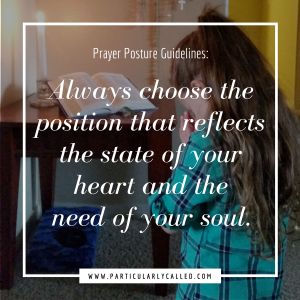
What prayer postures are most meaningful to you? Why? Share Below!
Blessings!
#ParticularlyCALLED #Togetherinthetrenches #IamCALLED
[mailerlite_form form_id=1]
